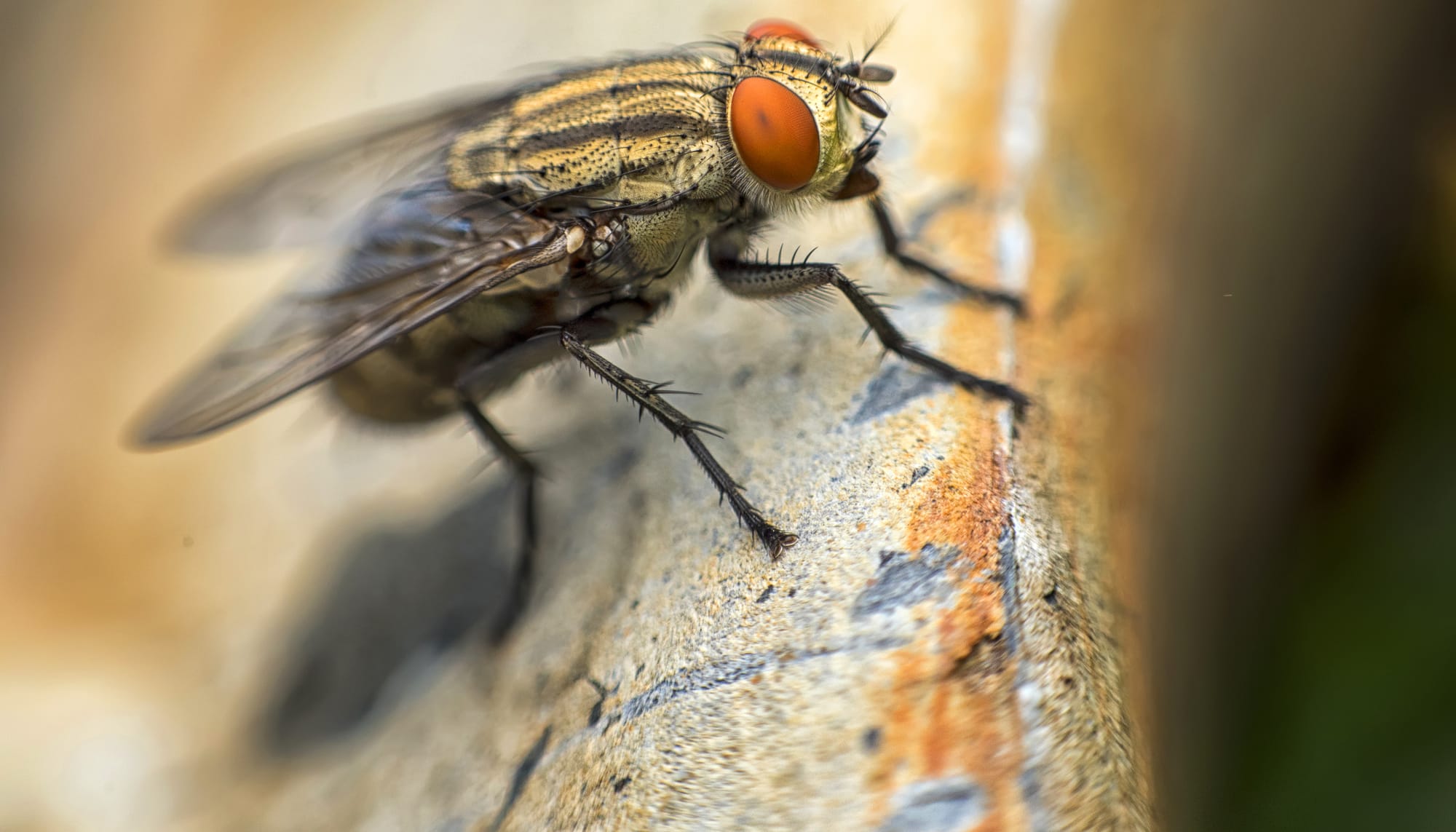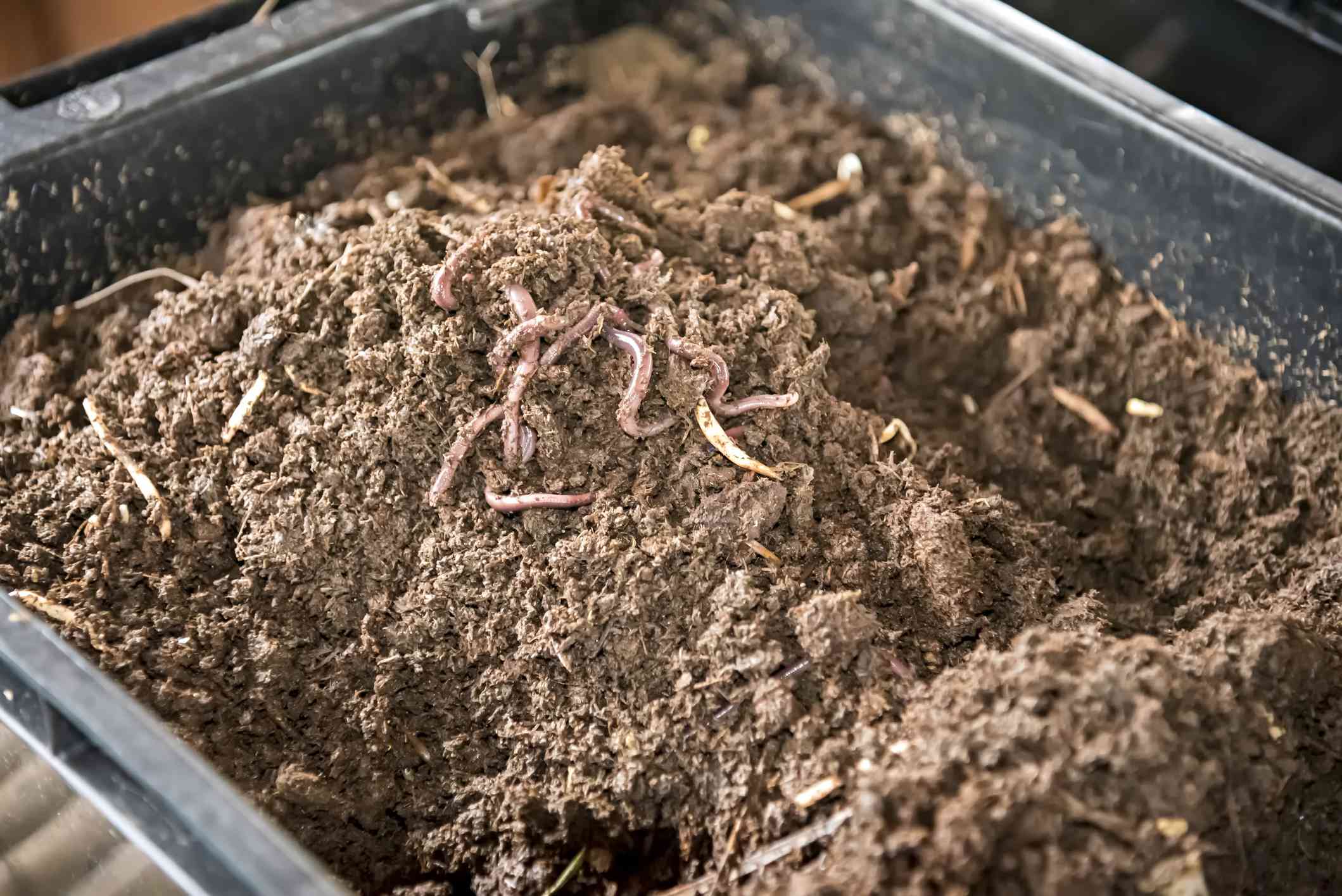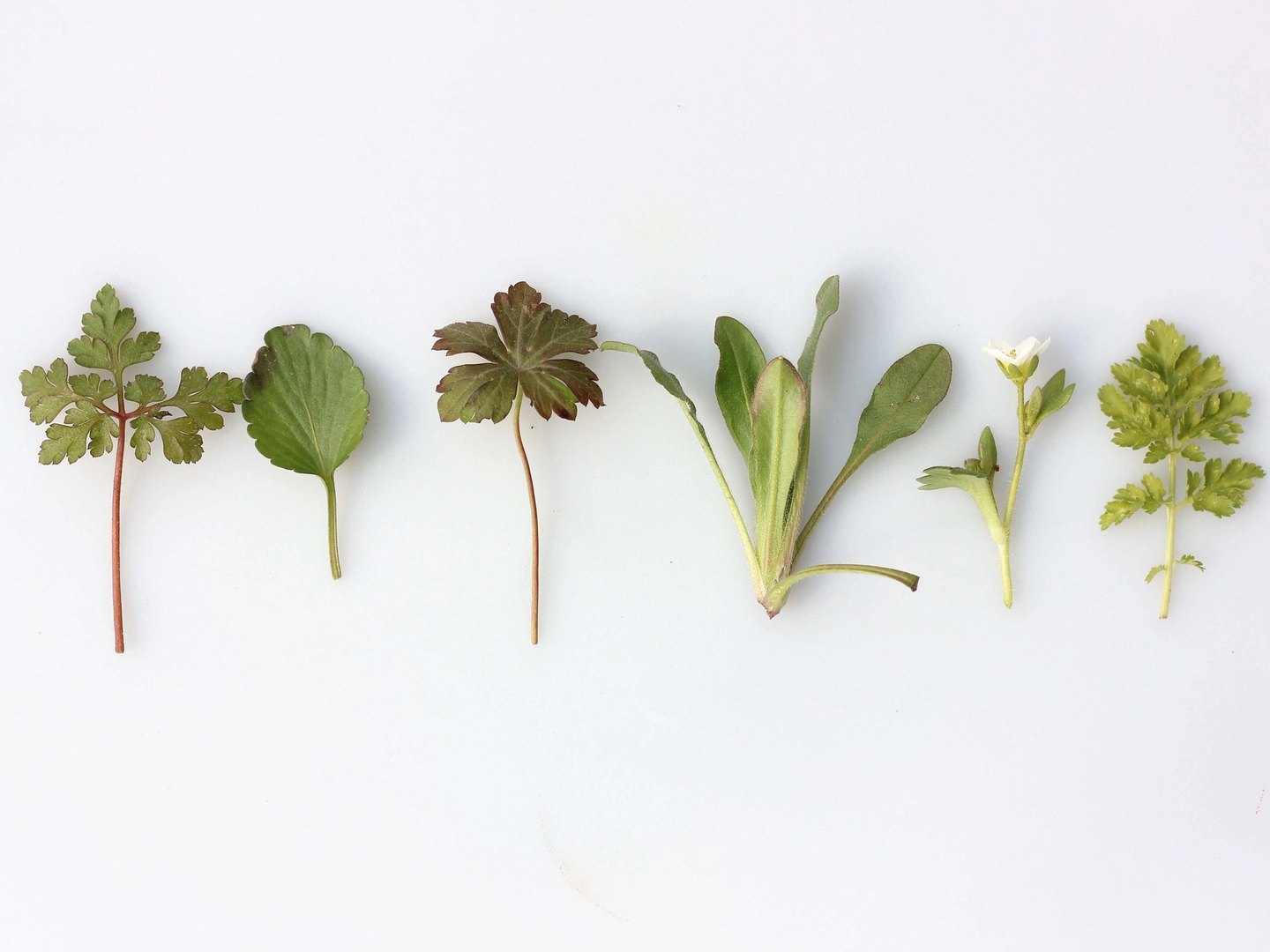Home>Gardening News and Trends>Latest News>How Can Insects Help In Toxicological Analysis


Latest News
How Can Insects Help In Toxicological Analysis
Modified: February 10, 2024
Discover the latest news on how insects can aid in toxicological analysis. Explore the unique ways these tiny creatures contribute to scientific advancements.
(Many of the links in this article redirect to a specific reviewed product. Your purchase of these products through affiliate links helps to generate commission for Chicagolandgardening.com, at no extra cost. Learn more)
Table of Contents
Introduction
Welcome to the world of toxicological analysis, where scientists and researchers work tirelessly to ensure the safety and well-being of individuals and the environment. Toxicological analysis involves the detection, identification, and measurement of harmful substances that may pose a risk to human health or the ecosystem. It plays a crucial role in various fields including forensic science, environmental monitoring, and drug testing.
Traditionally, toxicological analysis has relied on sophisticated laboratory techniques and equipment to analyze samples and detect toxic substances. However, in recent years, researchers have begun to explore alternative methods and tools, including the use of insects.
Insects, with their remarkable biological adaptations and behaviors, have shown great potential in assisting toxicological analysis. These small creatures can be utilized in various ways to provide valuable insights and aid in the identification and assessment of toxic substances in different environments.
The utilization of insects in toxicological analysis is not a new concept. In fact, it traces back to ancient times when insects were used for medicinal and diagnostic purposes. Today, the field of forensic entomology, which studies the interaction between insects and the environment to gather evidence in legal investigations, has provided valuable knowledge on the role insects can play in toxicological analysis.
This article will explore the importance of toxicological analysis, and specifically, the role of insects in this field. We will delve into how insects can serve as bioindicators, sample collectors, detoxifiers, and even as analytical tools, shedding light on the various ways they contribute to advancing toxicological analysis.
Importance of Toxicological Analysis
Toxicological analysis plays a vital role in safeguarding public health and the environment. It allows us to identify and assess the presence of toxic substances in various settings, ranging from workplaces and food sources to the air we breathe and the water we drink.
One of the primary reasons for conducting toxicological analysis is to ensure the safety of consumer products. From cosmetics and pharmaceuticals to household cleaners and food additives, products that are intended for human use must undergo rigorous testing to determine if they contain harmful substances or exceed acceptable limits of toxic compounds. By conducting thorough toxicological analysis, regulatory bodies can establish guidelines and standards that protect consumers from potential health risks.
Another critical application of toxicological analysis is in forensic investigations. Toxicologists play a vital role in determining the cause of death in suspicious cases and identifying any toxic substances that may have contributed to the individual’s demise. By analyzing bodily fluids, tissues, and other samples, toxicologists can provide crucial evidence in criminal investigations and assist judicial systems in delivering justice.
Environmental toxicological analysis is also of utmost importance in assessing the impact of pollutants on ecosystems. Through the analysis of soil, water, and air samples, scientists can identify and monitor the presence of toxic substances that may be detrimental to the environment and its inhabitants. This information allows policymakers and environmental agencies to enforce regulations and take necessary measures to mitigate pollution and protect vulnerable ecosystems.
Furthermore, toxicological analysis is essential in occupational health and safety. It enables employers and regulatory bodies to identify potential hazards in the workplace and establish measures to protect workers from exposure to toxic substances. By regularly monitoring workplace environments and conducting toxicological analysis on samples, employers can ensure the well-being of their employees and reduce the risk of occupational diseases.
In summary, toxicological analysis is a critical component of public health, consumer protection, forensic investigations, environmental monitoring, and occupational safety. By identifying, measuring, and assessing toxic substances, it allows us to make informed decisions, protect individuals and the environment, and mitigate potential risks. The insights gained from toxicological analysis contribute to the development of safer products, the detection of crimes, the preservation of ecosystems, and the overall well-being of society.
Role of Insects in Toxicological Analysis
Insects are not just pests or creatures of fascination; they have proven to be invaluable allies in the field of toxicological analysis. Their unique biological adaptations and behaviors make them excellent candidates for various roles in this area of study.
One crucial role that insects play in toxicological analysis is that of bioindicators. Bioindicators are organisms that provide information about the state of the environment by showing measurable responses to changes in their surroundings. Insects, such as bees, butterflies, and dragonflies, have been used as bioindicators to assess the impact of pesticides, heavy metals, and other contaminants on the environment. Their populations and behaviors can reveal the presence and effects of toxic substances, providing valuable insights into the overall health of ecosystems and helping to guide environmental management strategies.
In addition to being bioindicators, insects can also act as sample collectors in toxicological analysis. Certain insect species, like bees and ants, have a natural affinity for collecting and storing various substances, including nectar, pollen, and even toxins. Researchers have capitalized on this behavior by training insects to collect samples from contaminated areas. By analyzing the collected samples, scientists can identify and quantify the presence of toxic substances, providing critical data for risk assessment and environmental monitoring.
Another intriguing role that insects play in toxicological analysis is that of detoxifiers. Some insects possess remarkable detoxification mechanisms that allow them to metabolize or sequester toxic substances without being harmed. This unique ability, observed in certain beetles and moths, has potential applications in bioremediation, where insects can be harnessed to clean up polluted environments by breaking down or removing toxic compounds.
Insects can even be considered as analytical tools themselves in toxicological analysis. The field of forensic entomology, for example, relies on the knowledge of insect behaviors, life cycles, and ecological relationships to estimate postmortem intervals, detect drugs and toxins in corpses, and provide evidence in criminal investigations. By examining the presence and development of insects on a body or at a crime scene, forensic entomologists can glean valuable information about the circumstances surrounding a death, and even the presence of specific toxins that may have been involved.
In summary, insects play diverse and essential roles in toxicological analysis. They serve as bioindicators, sample collectors, detoxifiers, and even analytical tools. Their natural behaviors, unique adaptations, and extraordinary abilities make them valuable assets in understanding the presence and impact of toxic substances in various environments. By harnessing the power of insects, scientists and researchers can continue to advance toxicological analysis and contribute to a safer and healthier world.
Insects as Bioindicators
Insects have proven to be valuable indicators of environmental health and the presence of toxic substances. As bioindicators, insects can provide valuable insights into the overall state of ecosystems and the impact of pollutants on the environment.
One example of insects as bioindicators is the decline in bee populations. Bees, as pollinators, play a crucial role in maintaining biodiversity and supporting food production. However, the widespread use of pesticides and the destruction of their natural habitats have led to a significant decline in bee populations. This decline serves as an alarm, indicating potential environmental issues and the presence of harmful substances that affect not only bees but also other organisms in the ecosystem.
Butterflies and dragonflies are also commonly used as bioindicators. Changes in their populations, migration patterns, and habitats can indicate the presence of toxins or habitat degradation. For instance, the presence of specific butterfly species in an area can suggest the quality of air and water, as they are sensitive to pollutants and habitat conditions.
In addition to observing population changes, studying the behaviors of insects can provide valuable information regarding environmental toxins. Certain insects have been observed to exhibit altered behaviors or physiological changes when exposed to toxic substances. These changes can include reduced feeding, altered mating behaviors, or increased mortality rates. By monitoring these behavioral changes, scientists can identify areas of concern and develop strategies to mitigate the impact of toxins on various ecosystems.
Furthermore, the accumulation of pollutants within insect populations can serve as an indicator of toxic substance presence. This means that insects can act as “mini laboratories” in which to measure and assess toxic elements and compounds. Insects such as bees and ants, known for their foraging behaviors and ability to collect environmental samples, can accumulate pollutants within their bodies. By analyzing these insects, scientists are able to determine the extent of contamination in a particular area and gain insights into the potential risks posed to other organisms in the ecosystem.
Overall, insects act as valuable bioindicators due to their sensitivity to environmental changes and their ability to accumulate and exhibit responses to toxic substances. By monitoring insect populations, behaviors, and pollutant accumulation, scientists can gain valuable insights into the presence and impact of toxins on ecosystems, supporting efforts towards a healthier and more sustainable environment.
Insects as Sample Collectors
Insects have a remarkable ability to collect and store various substances, making them effective sample collectors in toxicological analysis. This unique characteristic has been harnessed by researchers to gather samples from contaminated environments, providing valuable insights into the presence and distribution of toxic substances.
One of the key advantages of using insects as sample collectors is their ability to access hard-to-reach areas. Insects can navigate intricate spaces, such as crevices, soil layers, and plant structures, allowing them to sample a wide range of habitats that might be challenging for human researchers to access directly. This provides a more comprehensive understanding of the presence and distribution of toxic substances in different environmental compartments.
In certain studies, bees have been trained to collect samples for analysis. By attaching small collection devices to their bodies, bees can visit flowers, water sources, or other areas of interest and inadvertently collect trace amounts of toxins present in the environment. These collected samples can include pollen, nectar, or even environmental particles, such as dust, providing a valuable source of information about potential toxicity in the surrounding area.
Similarly, ants have been used as sample collectors due to their foraging behaviors. Scientists have designed mechanisms that allow ants to collect samples from specific locations, such as contaminated soil or water bodies. Ants then transport these samples back to the colony, where they can be collected and analyzed. This method not only provides insights into the presence of toxic substances but also allows researchers to assess the potential uptake and transfer of contaminants within the food chain.
In addition to bees and ants, other insect species have been utilized as sample collectors in specific contexts. For instance, mosquitoes, well-known carriers of diseases, have been used to collect blood samples from humans and animals for toxicological analysis. The presence of certain chemicals or toxins in the blood can provide valuable information about exposure levels and potential health risks.
By utilizing insects as sample collectors, researchers can obtain a wealth of information about the presence and distribution of toxic substances in various environments. The samples collected by insects serve as a valuable resource for further analysis, allowing scientists to quantify the levels of contaminants, identify specific compounds, and assess potential risks to human health and the environment.
This innovative approach to sample collection not only provides a more comprehensive understanding of toxicological analysis but also offers cost-effective and efficient ways to gather data from the environment. Insects, with their innate abilities to navigate and interact with their surroundings, present a promising avenue for advancing the field of sample collection in toxicological analysis.
Insects as Detoxifiers
Insects possess remarkable abilities to detoxify and tolerate toxic substances, making them valuable assets in the field of toxicological analysis. Certain insect species have evolved unique biochemical pathways and physiological adaptations that allow them to break down, sequester, or tolerate toxins, contributing to the overall health of ecosystems.
One example of insects’ detoxification abilities is observed in certain beetles, such as ladybugs. These beetles are known for their remarkable feeding habits, which involve consuming large quantities of aphids or other small insects that may be pests to plants. However, in the process of feeding, ladybugs are also exposed to toxic chemicals present in their prey, such as plant toxins or pesticides. Ladybugs possess enzymes and detoxification mechanisms that allow them to process and neutralize these toxins, effectively detoxifying themselves and reducing the overall impact on their health.
Insects also play a significant role in bioremediation, which involves the use of living organisms to remove or degrade pollutants from contaminated environments. Some insect species, such as certain moths and beetles, have the ability to metabolize or sequester toxic substances without experiencing harmful effects. These insects can accumulate pollutants within their bodies, effectively removing them from the environment and reducing their potential harm to other organisms.
Moreover, insects can contribute to detoxification through their interactions with microorganisms. Many insects have symbiotic relationships with bacteria that reside in their gut or on their bodies. These bacteria can assist in the breakdown and detoxification of complex substances, such as toxic compounds found in plant materials or pollutants in the environment. By working in tandem with these bacteria, insects can effectively neutralize or eliminate toxins, helping to maintain the balance and health of their ecosystems.
Additionally, insects can play a role in detoxification through their interactions with plants. Some insects have evolved the ability to feed on plants that produce toxic compounds as a defense mechanism. These insects have developed mechanisms to overcome the toxic effects of the plant’s chemicals, enabling them to utilize these plants as a food source. Their feeding behavior aids in reducing the overall levels of toxic compounds in the environment.
By understanding and harnessing the detoxification abilities of insects, researchers can explore innovative strategies for environmental remediation and the development of natural solutions to combat pollution. The unique biochemical pathways and adaptations of insects provide valuable insights into how organisms can adapt and thrive in the presence of toxic substances, offering potential avenues for developing environmentally friendly approaches to detoxification.
Overall, insects possess fascinating detoxification abilities that contribute to the maintenance of healthy ecosystems. Their capacity to break down, sequester, or tolerate toxins showcases the incredible resilience and adaptability of these small creatures. By studying and leveraging their detoxification mechanisms, scientists can gain valuable knowledge and potentially develop novel methods for addressing environmental pollution and enhancing toxicological analysis.
Insects as Analytical Tools
Insects, with their unique behaviors and life cycles, can serve as valuable analytical tools in the field of toxicological analysis. Researchers have explored the potential of insects to provide insights and evidence in various applications, including forensic investigations, drug detection, and environmental monitoring.
Forensic entomology is a prime example of the utilization of insects as analytical tools. Insects, particularly flies and beetles, play a crucial role in estimating postmortem intervals and providing evidence in criminal investigations. By studying the development stages of insects found on a body or at a crime scene, forensic entomologists can estimate the time of death and provide valuable insights into the circumstances surrounding the incident. Furthermore, the presence or absence of certain drugs or toxins in the insects can indicate the involvement of specific substances in a crime.
Insects have also been used in drug detection. Bees, with their keen sense of smell, can be trained to detect certain drugs, such as cocaine or explosives. By conditioning bees to associate a particular scent with a reward, such as sugar water, they can be trained to respond when exposed to the target odor. This ability makes bees potential allies in the detection of illicit substances, offering a cost-effective and efficient alternative to traditional drug detection methods.
Furthermore, insects can be utilized in environmental monitoring to assess the presence and levels of contaminants in different ecosystems. Certain aquatic insects, such as caddisflies and mayflies, are highly sensitive to changes in water quality and pollution levels. By monitoring the presence and abundance of these insects in water bodies, scientists can gain insights into the health of ecosystems and identify areas of concern. Additionally, the accumulation of pollutants within insect populations can provide data on the presence and persistence of contaminants in the environment.
Insects can also serve as indicators of ecological disturbances. For instance, the presence of certain species of ants or termites can be indicative of soil contamination or habitat degradation. By using insects as biomarkers, researchers can assess the impact of environmental changes and identify areas requiring remediation or conservation efforts.
By utilizing insects as analytical tools, researchers can benefit from their natural behaviors and biological adaptations to gather valuable information in various fields. Their ability to provide evidence in forensic investigations, detect drugs, monitor environmental quality, and indicate ecological disturbances showcases the versatility and potential of insects in advancing toxicological analysis.
However, it is important to consider and address any ethical concerns regarding the use of insects in these analytical roles. The welfare and ethical treatment of insects should be prioritized, ensuring that their use is justified and conducted with proper care and respect for their well-being.
Conclusion
In conclusion, insects play a significant and multifaceted role in the field of toxicological analysis. Their unique biological adaptations, behaviors, and abilities make them invaluable assets in various aspects of this field. From serving as bioindicators to sample collectors, detoxifiers, and even analytical tools, insects offer a wealth of opportunities for advancing our understanding of toxic substances and their impact on the environment, public health, and forensic investigations.
Insects serve as bioindicators, providing valuable insights into the overall health of ecosystems and the presence of toxic substances. Their population changes, behaviors, and accumulation of pollutants within their bodies all contribute to the assessment of environmental quality and potential risks.
As sample collectors, insects can access hard-to-reach areas and gather valuable samples from contaminated environments. The collected samples can be analyzed to identify, quantify, and assess the presence of toxic compounds, guiding risk assessments and environmental monitoring efforts.
Insects’ detoxification abilities are remarkable, as they can metabolize, sequester, or tolerate toxic substances without harmful effects. This unique characteristic has potential applications in bioremediation, where insects can aid in cleaning up polluted environments by breaking down or removing contaminants.
Furthermore, insects can serve as analytical tools in various fields. In forensic entomology, they provide invaluable evidence in criminal investigations and assist in estimating postmortem intervals. In drug detection, insects like bees can be trained to detect specific substances, offering a potential alternative to traditional drug detection methods. In environmental monitoring, insects can indicate the presence of contaminants and help assess ecological disturbances.
It is important to continue exploring and harnessing the potential of insects in toxicological analysis, while also considering and addressing ethical concerns related to their use. By leveraging the unique abilities of these small creatures, scientists and researchers can uncover new insights, develop innovative approaches, and contribute to a safer and healthier world.










